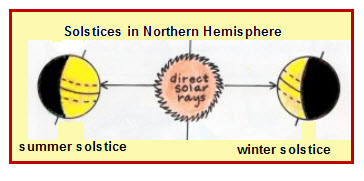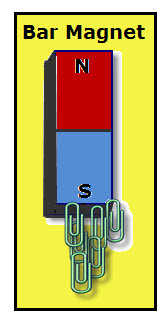Sound is a type of energy that moves through material causing the material to vibrate. Sound is also vibrations that cause the sense of hearing. Vibrate means that a material moves back and forth or up and down. Sound energy causes a material to move back and forth in the same direction that the sound […]
Seed Parts
The diagram shows shows the inside of a pinto bean. The embryo is the part of the bean seed that develops into a bean plant. The remaining part, called the cotyledon, is the food for the developing embryo. Use the diagram to identify the following parts of the embryo. embryo –the immature plant inside a […]
Equinox vs. Solstice
Times of sunrise and sunset change daily throughout the year as Earth revolves around the Sun. Changes in seasons are linked to the regular changes in the hours of daylight and darkness throughout the ear. The equatorial region (tropics) between the Tropic of Cancer and the Tropic of Capricorn has about an equal amount of […]
Science Inquiry: Hypothesis
How to Write a Hypothesis. Use words from the Word Bank to complete the hypothesis for the experiment problem. Word Bankdecreases increases Experiment Problem: How does the strength of a magnet affect the number of paper clips it can pick up? Hypothesis: As the strength of a magnet ? the number of paper clips it […]
Scientific Method Scripted Lesson
Following is a lessons prepared for a pre-K class. It can be adapted for any age group. ——————————————————————————- This lesson uses the mixing of primary colors to teach how the five senses are used to make observations. Hypothesis, called guesses for young learners, will be made and testing done to determine if the hypothesis is […]
Science Fair Projects: Topics
If your goal is to get an A+ on your project, win awards at the science fair, and learn many new things about science, then choose a topic that interests you. If you find after some work that your topic is not as interesting as you originally thought, if possible stop and select another one. […]
Science Fair Project: Energy
Hi, All of the links on this post are not working—I am in the process of correcting this problem. Janice Before you start your project, acknowledge that you are preparing an entry to a contest. Contests, whether they are associated with sports or academics have rules. Football players must follow the rules to score. Science […]
Engineering Projects
Engineering projects may be part of a science fair, but each has a different set of guidelines for solving problems or finding answers to questions. The process for science fair projects is called the Scientific Method. The process used to develop an engineering fair project is called the Engineering Method. These different methods stem from […]
Engineering Project Judging
Janice VanCleave’s Engineering for Every Kid: Easy Activities That Make Learning About Engineering Fun Ideas that can be developed into Engineering Projects. The following guidelines are set by the International Science and Engineering Fair (ISEF). Note that these guidelines address judging of both science projects and engineering projects. This comparison gives you clues about […]
Science Fair Committees
Judging Committee This group invites and and notifies judges of date, time and location where they will work. Familiarizes judges with the judging criteria for the grade level they will be evaluating (a ratio of one judge per 20 projects is recommended, with three judges per project); provides judges materials, such as a clip board […]
- « Previous Page
- 1
- …
- 48
- 49
- 50
- 51
- 52
- …
- 96
- Next Page »



